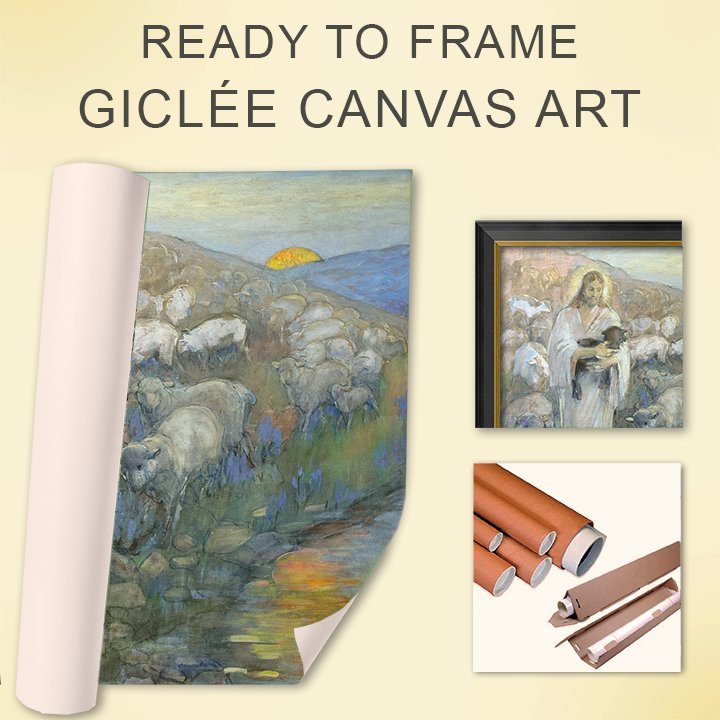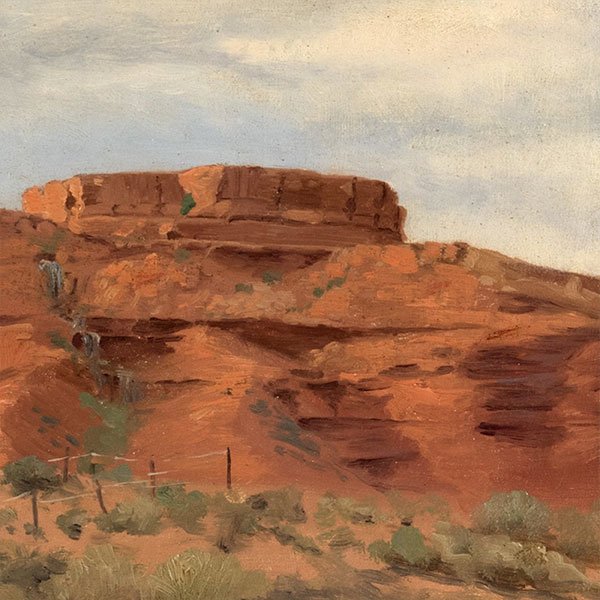Covered Wagon Pioneers by Minerva Teichert (c. 1928)
The abiding theme of early settlers and pioneers coming from around the world to the Great Salt Lake has given us several impressive paintings by Minerva Teichert. The tall and leaning wagons making their way through the canyons is endearing to see. This beautiful piece is a perfect example of Minerva Teichert’s striking scenes and bold colors.
More About Covered Wagon Pioneers
There are few artists who have captured the spirit of the great Latter-day Saint migration as well as Minerva Teichert did. Her equal portrayal of of the heroic effort made by men, women and children in the struggle to follow their faith is both accurate and deserving. All who traveled the Mormon Trail sacrificed while enduring both hardship and the uplifting hope that came through the Spirit. Minerva painted over 90 murals thought Utah, Idaho andWyoming. Her work in the Utah State Capitol building is one example of her meaningful contribution to artistically document the American experience for most Latter-day Saints at the time.
Minerva painted many scenes that included covered wagons of the Latter-day Saint movement. She was contemporaries with other atrsists like of C.C.A. Christiansen, Avard Fairbanks, John Hafen, Maynard Dixon, George Ottinger and others. Minerva Teichert’s art stands out in its style, colors, and proud historic moments, which has become a hallmark of her work. Covered Wagons by Minerva Teichert is one of many examples of how she was able to capture the moment and vibrant landscape of an otherwise brand new world.
More About Minerva Teichert
Minerva Teichert was an artist whose works ranged from western American subjects to many religious paintings primarily depicting the history of the Latter-day Saint movement. This includes Minerva’s several works requested by the Church that were used to illustrate the stories using Book of Mormon art. She is also well known for the many murals she painted in public and private buildings scattered throughout Wyoming, Idaho and Utah. She was born Minerva Kohlhepp in 1888 in North Ogden, Utah. Minerva was the second of ten children and spent most of the first half of her life doing just as much farm work as she did painting. She studied under famous artists like Robert Henri at the Art Institute of Chicago and Art Students League of New York. When she was 29 years old, Minerva Kohlhepp married Herman Teichert on Septemeber 15, 1917. However, only one year after their wedding, World War One broke out and Herman left for battle. Although Minerva traveled with Herman throughout his boot camp training and transfers, she was eventually forced to bid farewell and stayed at home with their new born baby son. During the early years of their marriage, everything was in short supply because of the war, so Minerva Teichert would paint on scraps of wood and paper because there simply wasn’t enough money to buy art supplies. Fortunately, Herman returned home after the war and the couple went on to have four more children. Minerva and Herman spent most of their lives on a ranch in Cokeville, Wyoming. Much of Minerva Teichert art can also be found by searching for LDS art, LDS church pictures, and Mormon art; even though these are not official names of the Church of Jesus Christ of Latter-day Saints.










